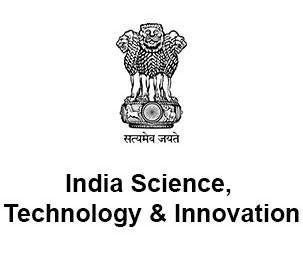The idea of rural development can get understood in an array of ways. But in India, it gets demonstrated as a set of objectives to well-formulated strategies, approaches, or even ideologies. In this digital-centric epoch, Science for rural applications & development has become a crucial planning concern. The reason is that strategies adopted in developing nations remained ineffective to alleviate poverty or inequalities in rural areas.
So, the rural sector requires development in areas like employment, education, and healthcare, besides agricultural and industrial innovations. Given the requirement of transformation in rural hubs, the department of Science and Technology can do wonders. The fact that technology and science are fundamental drivers of development is no denying.

After all, scientific and technological revolutions underpin economic improvements and advances in a multitude of systems. In this manner, it leads to betterment in the standard of life. Besides, it bridges the gap between urban and rural structures in terms of facilities and amenities.
Applications of Science and Technology in Rural Hubs
Science-based organisations across India focus on technological evolutions in rural areas. These evolutions must be sustainable and contribute to a healthy lifestyle. Here are examples of significant scientific innovations incorporated in the 21st century’s rural sector.
1 Energy
Energy is a prerequisite for agriculture concerning inputs like fertilisers. Additionally, it’s also useful for water delivery and transportation. Besides bringing rural industrialisation, energy continues to be the firewood. Thus, large-scale afforestation implementations are required for fuel requirements in rural sectors. On this note, biomass generation through tissue culture techniques is of paramount prominence. Non-conventional energy sources are decentralised, non-polluting, and renewable. Some sources of energy that have contributed to decentralisation include:
- Biogas plants
- Solar cookers
- Smokeless stoves
- Solar water pumping
- Solar domestic lighting systems; and more

2 Water
Water is a significant single resource for human life and its survival. Each effort improves the availability of the drinking water system in the rural sectors. But it’s imperative to implement revolutionary scientific tactics to harvest water, recycle it, and conserve. Clean water in rural hubs must get the highest priority. In that direction, remote sensing happens to be a powerful method used for targeting water. But the effort requires:
- Community participation
- Assessment and evaluation of the existing rural water supply
- Technology transfer
- Research on maintenance of the water distribution system
- Rehabilitation of springs and their development to make water drinkable
3 Biotechnology
In the department of Biotechnology, progressions have huge potential for increasing efficiency, employment generation, and boosting productivity. These progressive activities include:
- Bio-fertilisers
- Aquaculture
- Biomass production through the techniques of tissue culture
- Embryo-transfer technology for upgrading herds and cattle; and more
These activities performed in daily rural life are effective on a larger scale.
4 IT or Information Technology
The implementation of information technology in significant sectors turns out to be quite pivotal for bringing major transformations in rural activities. These sectors include:
- Agriculture
- Energy
- Family planning
- Transportation
- Irrigation
- Healthcare
- Employment
- Education
Information based on local resources, expertise, and skills is imperative to formulate efficient decentralised planning.
5 Employment
Employment scopes within rural realms get generated with scientific and technological revolutions in areas like:
- Agricultural practices
- Animal husbandry
- Small scale industries
- Training and skills
It helps in improving rural people’s life with education and generating awareness through scientific approaches.
Takeaway
With the advancement of technology, progress in science is necessary for rural areas. For this reason, emerging low-tier businesses are planning to accomplish goals in bringing promising changes in rural hubs.
Summary:
With the startup efforts in science and technology in the rural hub, it may attempt to solve underlying challenges faced by the rural hub. Here’s your guide to understanding the common applications of science and technology in rural hubs.








